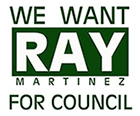Fort Collins to Denver Train Still a Puzzle
The December 10th article, “Pieces in Place for Fort Collins to Denver Amtrak Route” might have given the impression that obvious solutions have been overlooked. The Colorado Department of Transportation (CDOT) just needs to ring up Amtrak and tell them when to roll the first train. The impressions of simple solutions and the “we don’t need to spend $1.2 Billion to have the train service” statement at the beginning of the article need to be clarified.
The $1.2 Billion price tag is from CDOT’s North I-25 Commuter Rail Update released earlier this year. The construction cost estimate provides what is required for all day, 30 to 60 minute frequency commuter / passenger train service, 44 to 56 trains (22 to 28 round trips) per day; what most North Front Range residents say they want, what is expected to be needed eventually. The construction cost is required for the safe separation of freight and passenger trains in the Longmont-Fort Collins corridor. The corridor will also need to continue serving rail freight customers, including employers in our communities, whose businesses depend on reliable freight rail service. The cost estimate also includes construction of entirely new track between Longmont and RTD’s North Line, as well as “quiet zones” and other auto traffic improvements. If the service started with 3 or 4 round trips (10-15% of the eventual all-day service), the construction cost price tag could possibly come down for the Longmont to Fort Collins segment, but we don’t know what that price tag is. The segment of new track from Longmont to 162nd Ave./Colorado Boulevard (RTD’s North Line) is estimated at over $400 Million would be required independent of the shared corridor with BNSF.
Unlike highways built by CDOT, BNSF rail tracks are not public domain. Whenever the government, of, by and for the people, pursues a larger public interest, i.e. to deliver commuter rail service, we the people still must pay the property owner fair market value for use of the resource, be it land or track capacity. BNSF must retain the ability to provide, and perhaps expand, rail freight service in this corridor in the future, in response to customer needs.
The public, you and I as taxpayers, need more information to make the decision. First, would the public accept only 10-15% of the eventual all-day service if the construction price tag likely more than 33% ($400 Million from above) of the total $1.2 Billion price tag? Second, is the value proposition right? Is there a reason for taxpayers to trade $1.5 Million in annual operating costs for FLEX bus service which runs all day, for $1.2 Million annual operating cost per year to have eight fewer hours of service per day and half as many stops as FLEX? When trade-off answers to all those puzzle pieces come together, to deliver something better than we have today, then passenger train service can be supported.
David Krutsinger, AICP
Division of Transit & Rail, Deputy Director
Colorado Department of Transportation
https://www.codot.gov/…/north-i-25-commuter-rail-update-fin…


Leave A Comment
You must be logged in to post a comment.